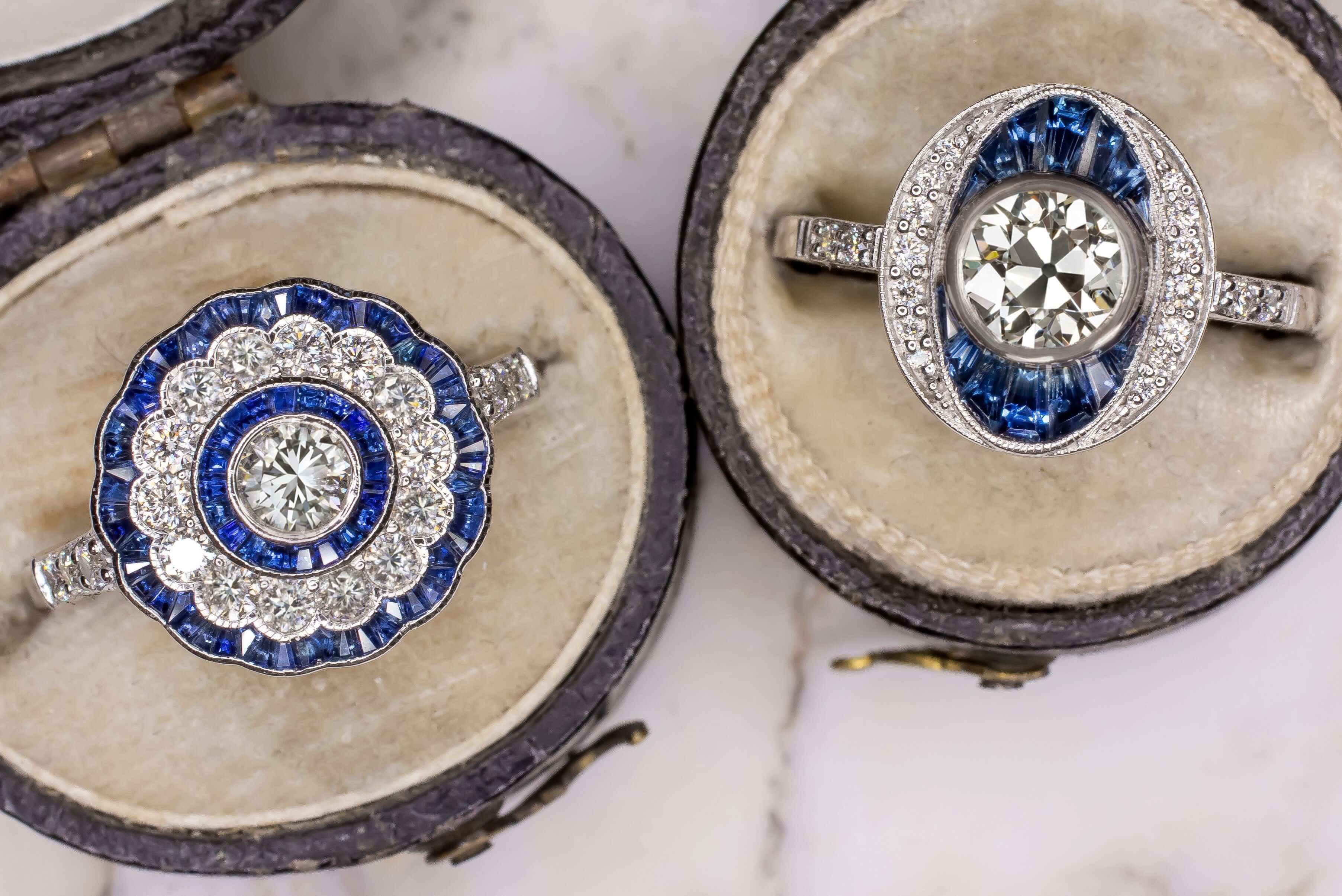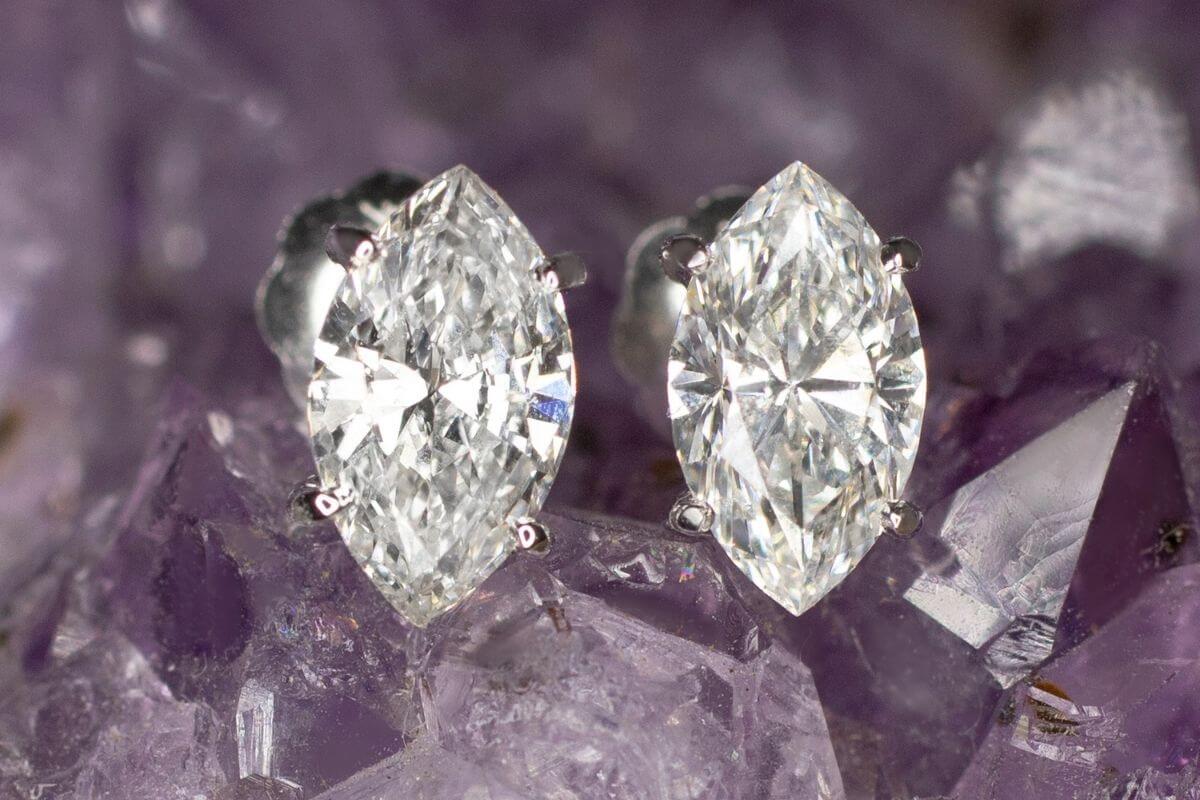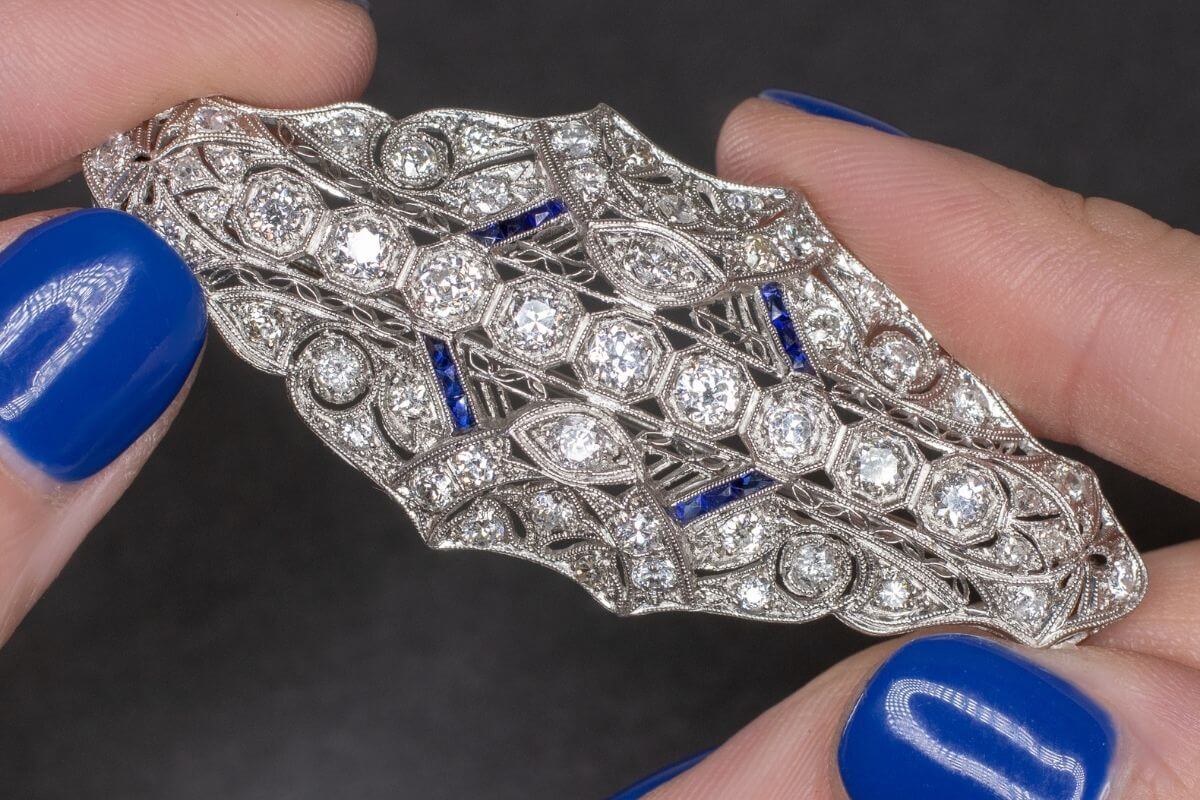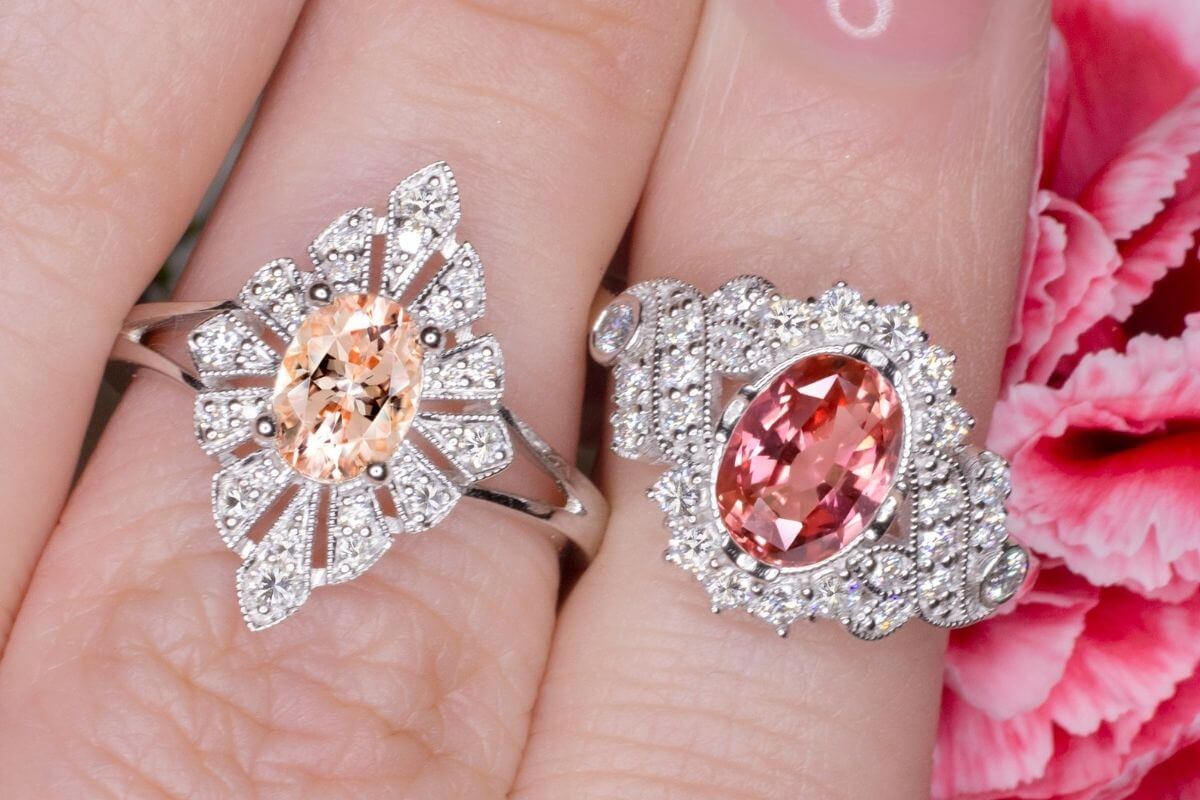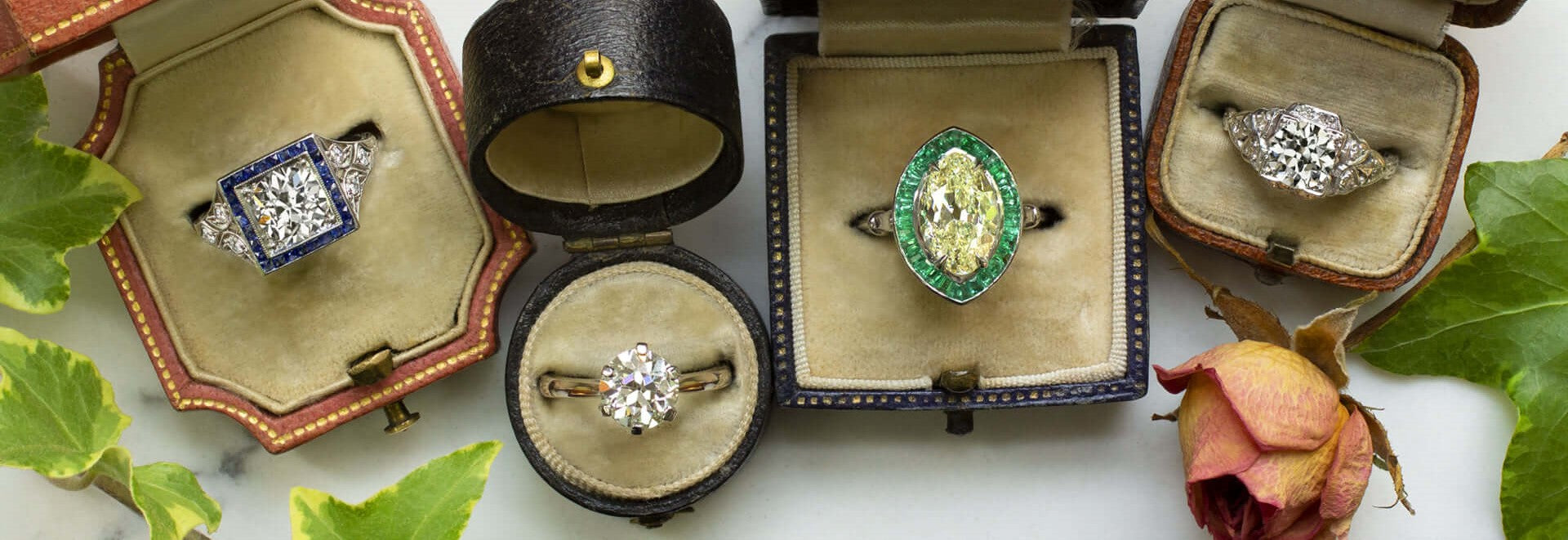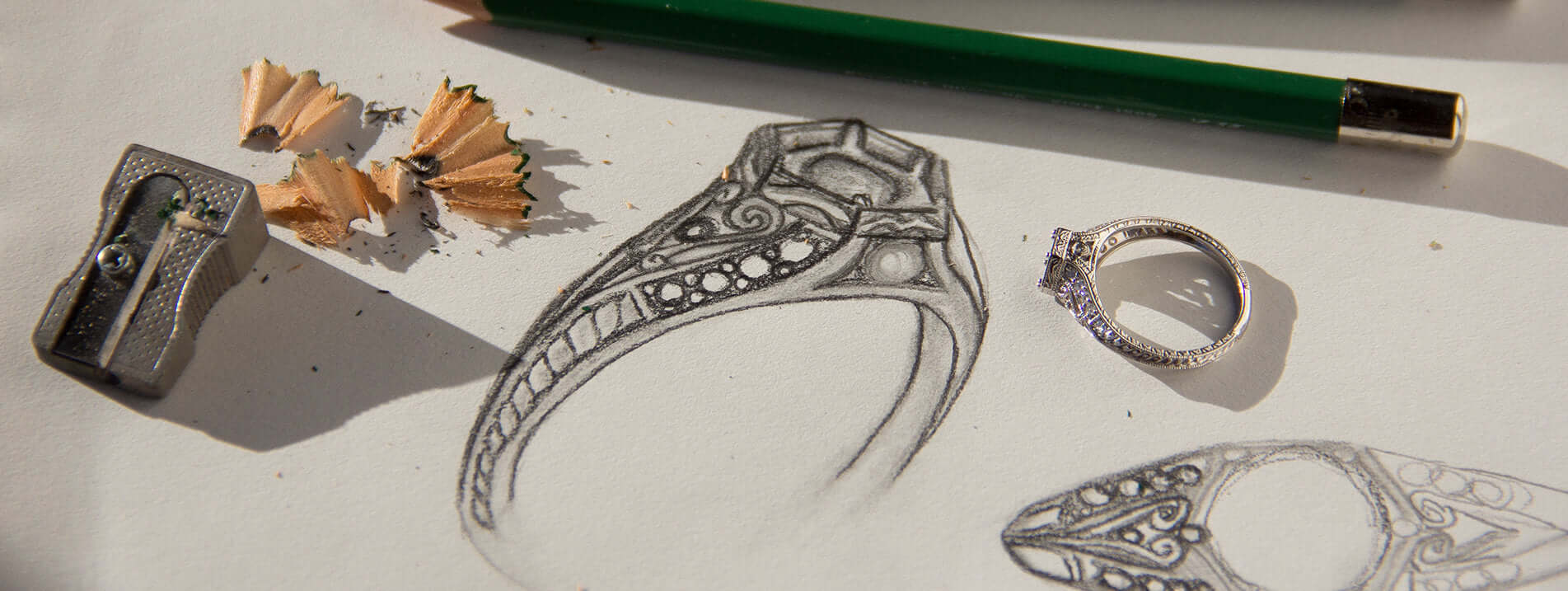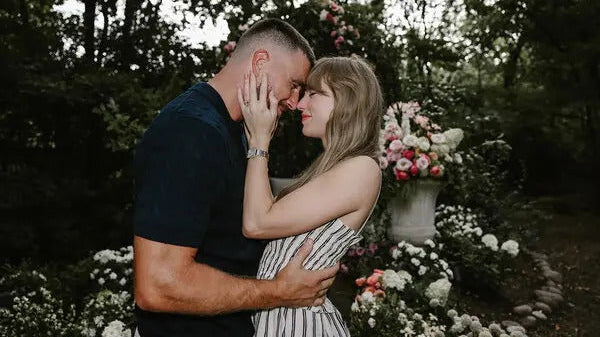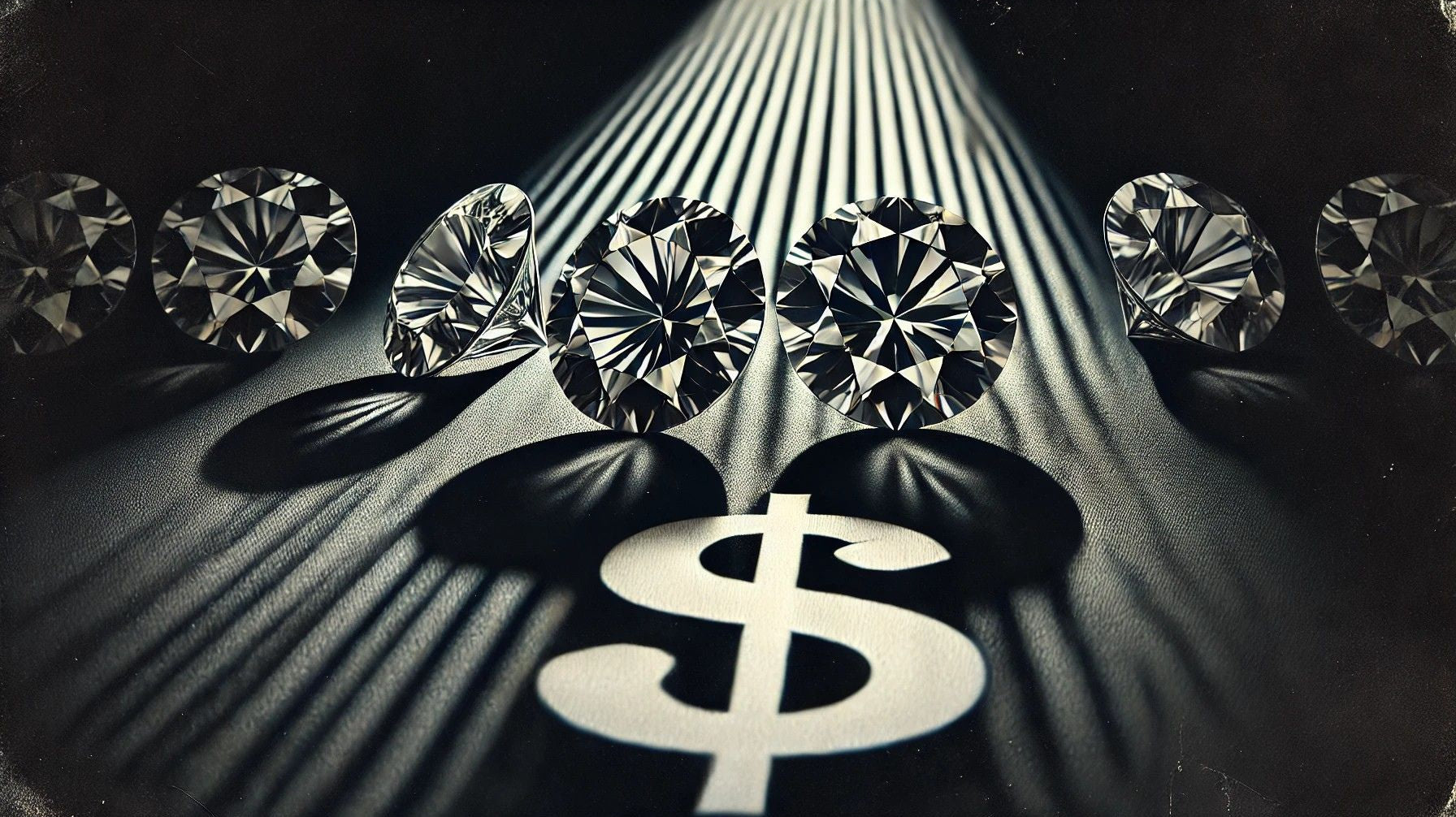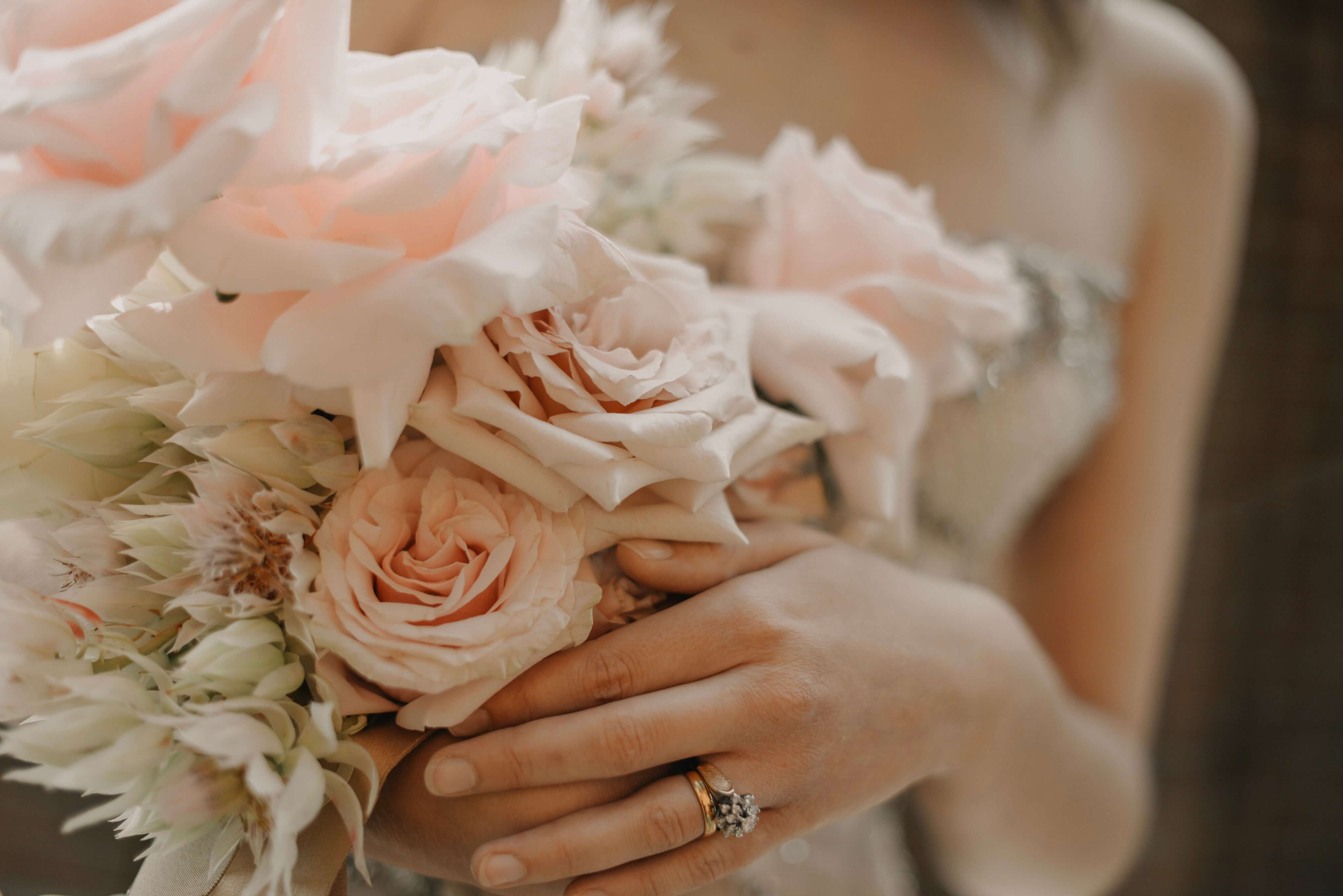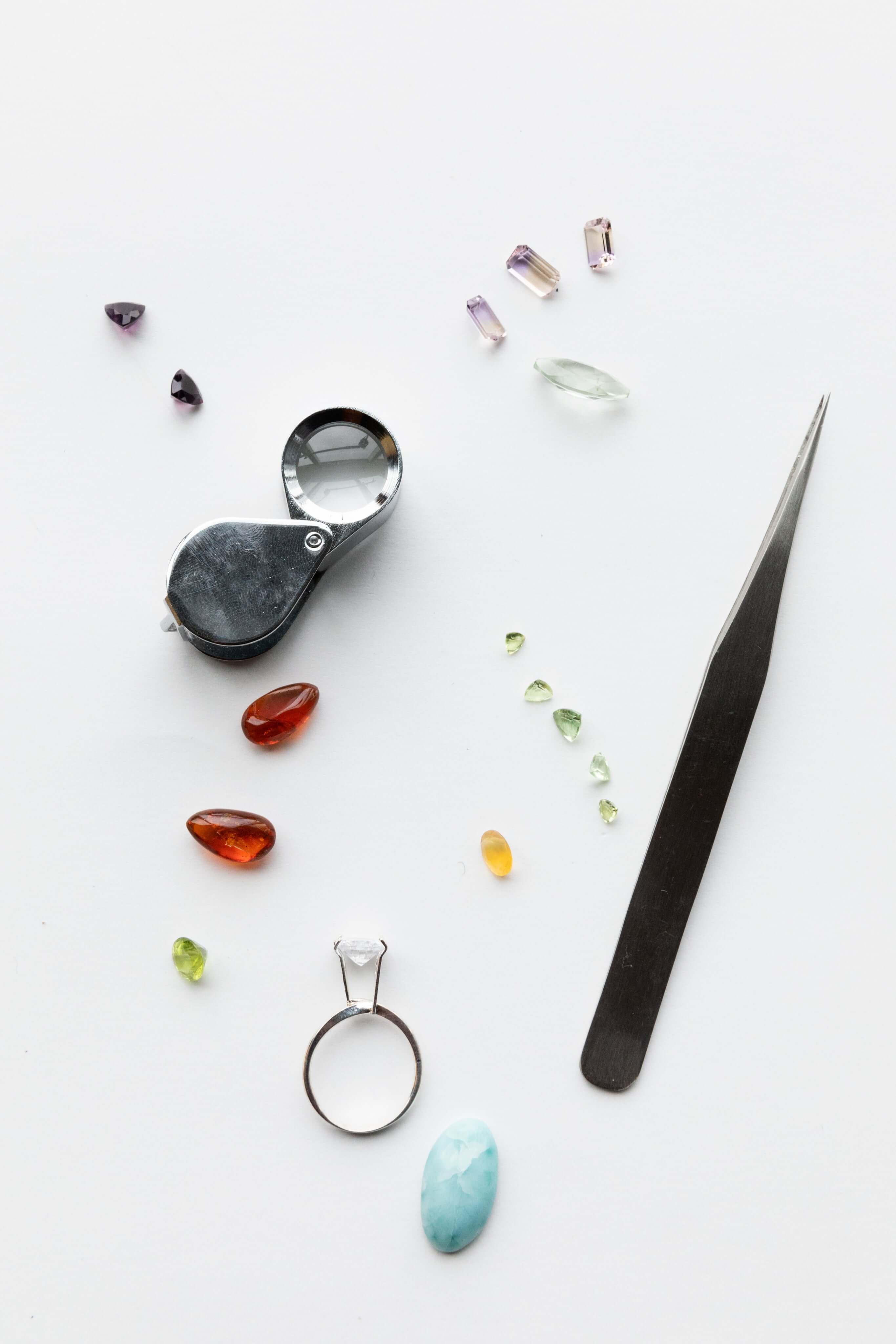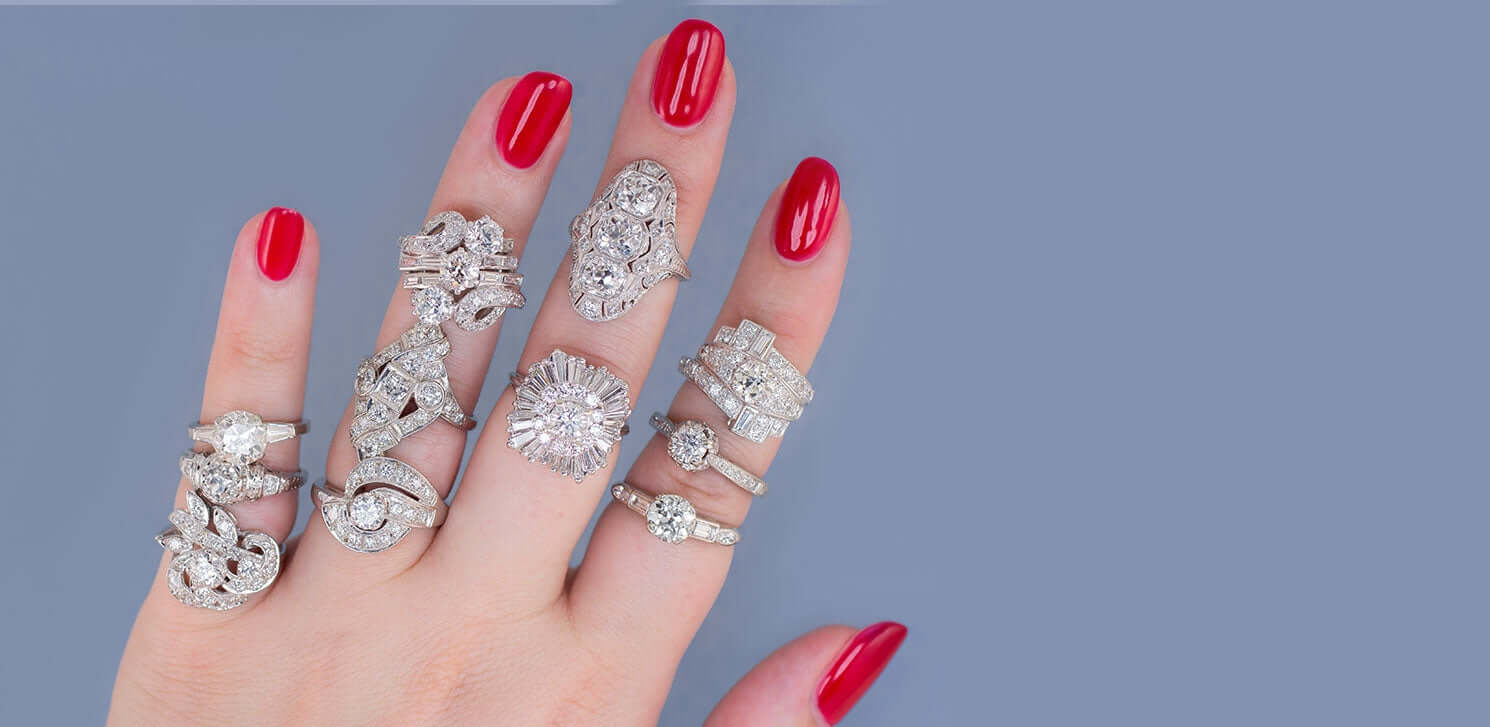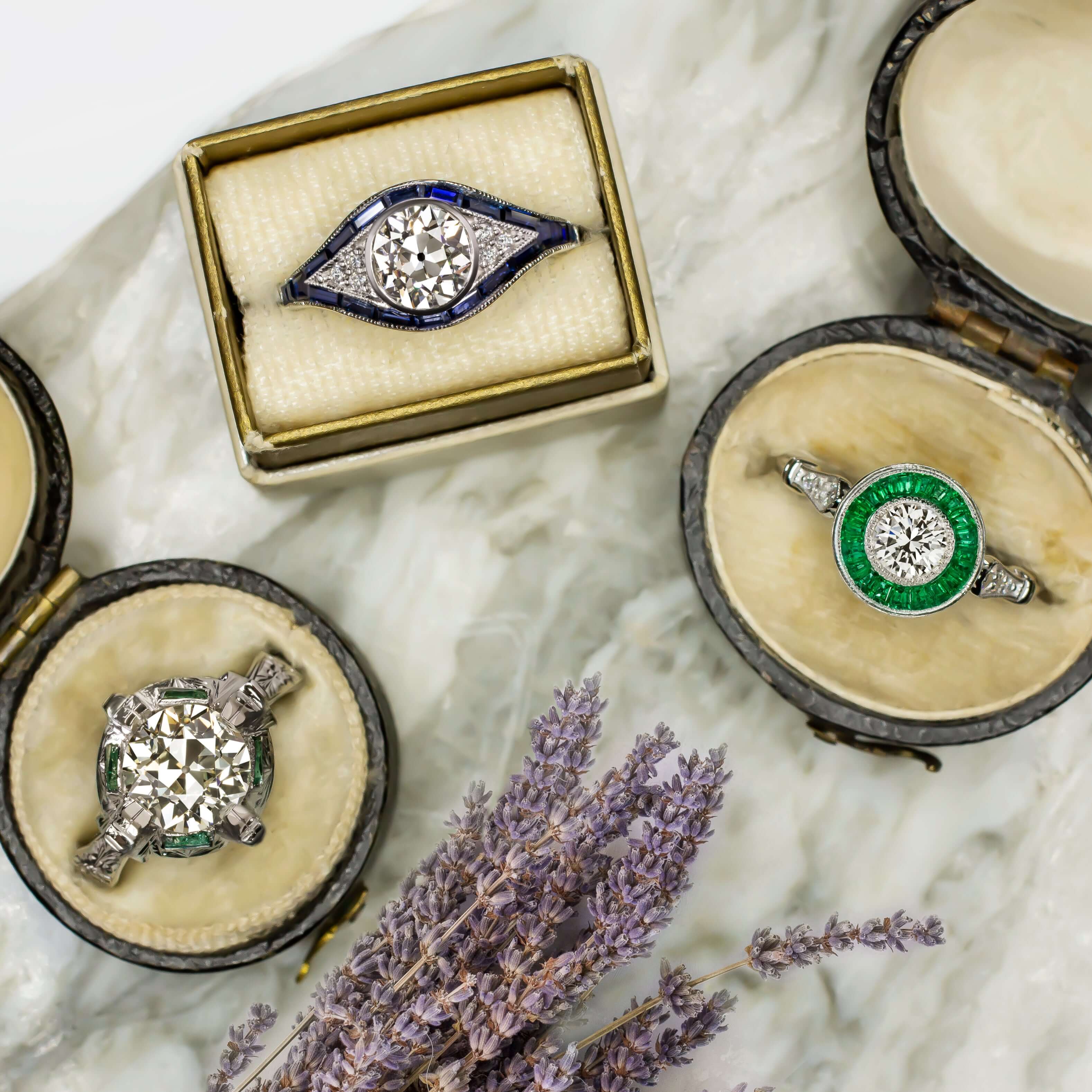-
Georgian Era (1714-1837):
- Early Georgian (Georgian Baroque) Period (1714-1760): Jewelry featured intricate metalwork, with designs inspired by nature, including flowers, leaves, and animals. Gemstones like diamonds, pearls, and colored gemstones were commonly used.
- Mid-Georgian (Georgian Rococo) Period (1760-1780): Jewelry designs became more ornate, incorporating motifs like ribbons, bows, and scrolls. Paste stones and foiled gemstones were popular due to advancements in glass technology.
- Late Georgian (Neoclassical) Period (1780-1837): Jewelry was influenced by the Neoclassical movement, featuring designs inspired by ancient Greece and Rome. Cameos, intaglios, and classical motifs like laurel wreaths and acanthus leaves were common.

-
Victorian Era (1837-1901):
- Early Victorian (Romantic) Period (1837-1860): Jewelry embraced sentimental and symbolic motifs, such as hearts, flowers, and bows, often set with gemstones and pearls.

- Mid-Victorian (Grand) Period (1860-1885): Jewelry designs became more elaborate and incorporated darker gemstones like garnets and amethysts. Mourning jewelry gained popularity.


- Late Victorian (Aesthetic) Period (1885-1901): Jewelry embraced naturalistic designs inspired by Japan and the Arts and Crafts movement. Motifs included birds, insects, and oriental themes.

- Early Victorian (Romantic) Period (1837-1860): Jewelry embraced sentimental and symbolic motifs, such as hearts, flowers, and bows, often set with gemstones and pearls.
-
Edwardian Era (1901-1915):
- Edwardian jewelry was characterized by elegance, femininity, and the use of platinum. Designs featured intricate lace-like patterns, delicate filigree, and motifs like bows, ribbons, and garlands. Diamonds were the predominant gemstone.


- Edwardian jewelry was characterized by elegance, femininity, and the use of platinum. Designs featured intricate lace-like patterns, delicate filigree, and motifs like bows, ribbons, and garlands. Diamonds were the predominant gemstone.
-
Art Nouveau (1890-1910):
- Art Nouveau jewelry broke away from the formal styles of the past and embraced sinuous lines, organic forms, and nature-inspired motifs like flowers, dragonflies, and flowing hair. René Lalique and Georges Fouquet were prominent designers of this era.



- Art Nouveau jewelry broke away from the formal styles of the past and embraced sinuous lines, organic forms, and nature-inspired motifs like flowers, dragonflies, and flowing hair. René Lalique and Georges Fouquet were prominent designers of this era.
-
Art Deco (1920-1935):
- Art Deco jewelry showcased geometric patterns, bold colors, and a sleek, streamlined aesthetic. Influence was drawn from Cubism, Egyptology, and industrial design. Diamonds, emeralds, rubies, and sapphires were frequently used, often in combination with black onyx or coral.



- Art Deco jewelry showcased geometric patterns, bold colors, and a sleek, streamlined aesthetic. Influence was drawn from Cubism, Egyptology, and industrial design. Diamonds, emeralds, rubies, and sapphires were frequently used, often in combination with black onyx or coral.
-
Retro (1935-1950):
- Retro jewelry emerged during World War II and reflected a desire for escapism and glamour. Designs were bold, featuring large, oversized pieces with curvaceous and voluminous forms. Gemstones like amethyst, citrine, and aquamarine were popular, often set in yellow or rose gold.


- Retro jewelry emerged during World War II and reflected a desire for escapism and glamour. Designs were bold, featuring large, oversized pieces with curvaceous and voluminous forms. Gemstones like amethyst, citrine, and aquamarine were popular, often set in yellow or rose gold.
-
Mid-Century Modern (1950-1970):
- Mid-Century Modern jewelry embraced clean lines, minimalism, and abstraction. Designs were influenced by architectural and industrial elements, and materials like silver and stainless steel gained popularity. Gemstones were often used sparingly, if at all.


- Mid-Century Modern jewelry embraced clean lines, minimalism, and abstraction. Designs were influenced by architectural and industrial elements, and materials like silver and stainless steel gained popularity. Gemstones were often used sparingly, if at all.
-
Contemporary and Modern Era (1970-Present):
- Contemporary jewelry design encompasses a wide range of styles and movements. From bold and avant-garde designs to minimalist and organic forms, jewelry reflects individual artistic expression. Designers experiment with a variety of materials, including unconventional ones like acrylic and recycled materials. Customization, personalization, and sustainability are key trends in modern jewelry.



- Contemporary jewelry design encompasses a wide range of styles and movements. From bold and avant-garde designs to minimalist and organic forms, jewelry reflects individual artistic expression. Designers experiment with a variety of materials, including unconventional ones like acrylic and recycled materials. Customization, personalization, and sustainability are key trends in modern jewelry.
The journey of jewelry design from the Georgian era to the present illustrates the ever-evolving nature of artistic expression in this form of adornment. Each era reflects the cultural, social, and artistic influences of its time, resulting in distinct styles, motifs, and materials. From the ornate elegance of Georgian jewelry to the innovative designs of contemporary jewelry, the evolution showcases the creativity and craftsmanship of designers throughout history. As we continue into the future, jewelry design will undoubtedly continue to evolve, reflecting new inspirations and pushing the boundaries of wearable art.

